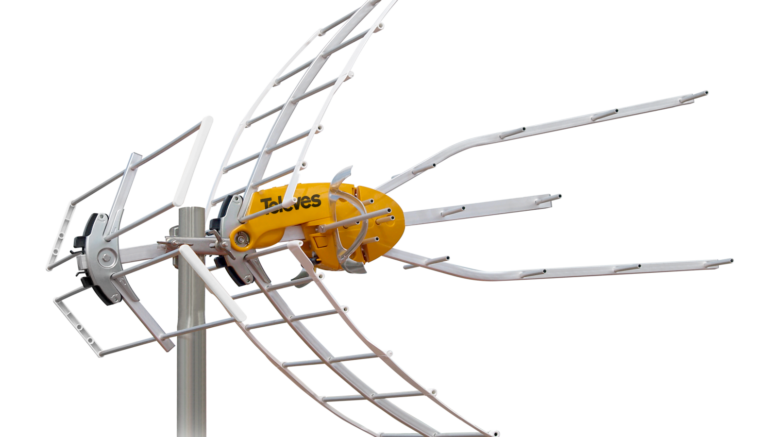Combining antennas is a great way to make sure everyone in your house watches what they want. If you live between two major cities, your TV stations come from two different directions. Most antennas can only point in one direction at a time — the ones that pull in signals from multiple directions have a limited range. So what can you do?
In the past, people have used rotators. A rotator is just a motor that automatically turns your antenna in the direction you choose. It’s a good choice if you have only one TV, but if you have two TVs, what if you need that antenna to point in two directions? That’s why you get two antennas. The other thing about rotators is that they don’t last forever. While they tend to be decently built, any motor that’s moving a heavy thing like an antenna, and which sits outside, isn’t going to last forever. That’s just common sense.
It’s very easy to combine two antennas using something like this Televes amplifier/combiner, but what are the risks if you have two different brands of antennas? For example you might be using an older antenna with a newer one, and you might not even know who made the older one.
Luckily it’s not that hard. It doesn’t really matter what brands the antennas are or even how old they are. You can combine pretty much any two antennas as long as you follow these rules:
They should point in two different directions
The best way to avoid interference is to really make sure the antennas are pointed in two different directions. This may mean aiming them a little off center so they’re not pointed toward the same thing. Generally, this makes little or no difference as antennas are designed to take in signals from a fairly wide area. Making sure there’s no overlap in what these antennas are receiving eliminates a lot of problems.
The cable lengths should be the same
You can minimize any interference by making sure the cables coming from both antennas are exactly the same length. This will keep signals from both antennas arriving to the combiner at exactly the same time. It should avoid the two sets of signals interfering with each other. There are some folks who say this is a myth. They say that the issue with antenna phasing is just not that big. At some point I’ll get out the trusty spectrum analyzer and prove them wrong. For now, just try to keep the cables the same length.
Don’t combine amplified and non-amplified antennas
Let’s say you are trying to combine signals from a nearby market with a distant market’s signals. You might be tempted to use an amplified antenna for one and not for the other. It’s not a hard and fast rule. Still, if one set of signals is much stronger than the other your TV’s tuner may not be able to handle things as effectively. If you can’t avoid using one amplified antenna, then ok, the world isn’t going to end.
With a little planning you will find that you’ll be able to easily combine two or more antennas. That way, everyone in the house can watch any channel they want, without any rotator or any problem. Your friends at Solid Signal can help… call us at 888-233-7563 if you have questions. If it’s after East Coast business hours, fill out the form below and we’ll get back to you. And as always, shop at Solid Signal. You’ll find the best antennas, accessories, and everything else you need to live your best digital life.




